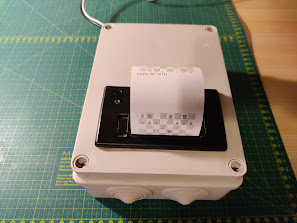Creating a Custom Chess Puzzle Printer
As my son gets ready to start school, I wanted to surprise him with something special. Over the past few years, he's developed a strong passion for chess, playing it every chance he gets. So, I thought, why not combine his love for chess with a little lunchtime surprise? The idea was to create a custom chess puzzle that I could print out and include in his lunchbox as a fun note.
The Inspiration and the Challenge
I had some experience with thermal printers from previous projects, so I decided to use one for this idea. The challenge, however, was to find a way to generate chess puzzles easily. Creating puzzles manually would be too time-consuming, so I needed a reliable source of puzzles.
As far as I know, two major chess platforms offer puzzles: Chess.com and Lichess. Fortunately, Lichess is open source and provides access to a vast database of chess puzzles. This made it the perfect choice for my project.
Turning Puzzles into Printable Images
With the puzzles secured, the next step was to transform them into images that could be printed on the thermal printer. After a bit of searching, I found a JavaScript library that could easily generate chess board images from text-based notation. It seemed like the perfect solution, so I started testing it out.
However, during testing, I ran into two issues. First, my son requested that the chess notation (the letters and numbers on the sides of the board) be included, which the library didn't support by default. Second, the black chess pieces on black squares were almost invisible after the image was converted to grayscale for printing, making the puzzles hard to read.
Customizing the Solution
To solve these problems, I decided to fork the JavaScript library and make some modifications. I added the requested chess notation labels to the sides of the board. To tackle the visibility issue, I created a new set of chess pieces with a white margin around them. This way, the black pieces would stand out even after the image was converted to grayscale.
Finally, I made sure to include the last move and the solution at the bottom of the puzzle. This way, my son could check his answer after trying to solve the puzzle during lunch.
The Final Product
After some tweaking and testing, I successfully created a custom chess puzzle printer. Now, I’m eagerly awaiting the first day of school so I can start slipping these puzzles into my son’s lunchbox.
You can find the source code here: https://github.com/mbodis/chess-image-generator




Comments
Post a Comment